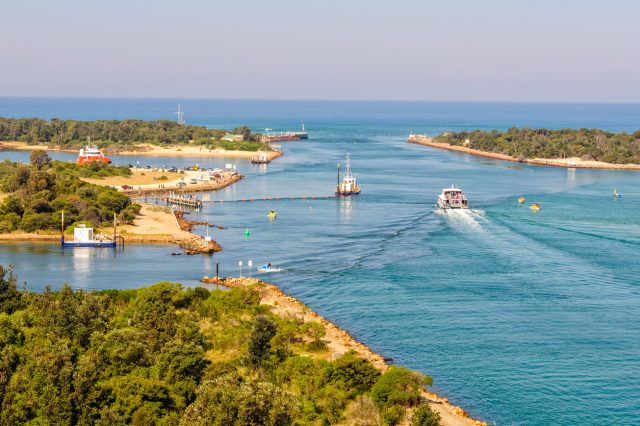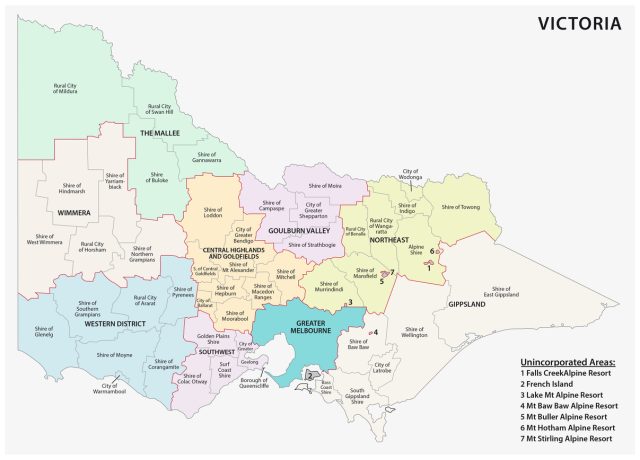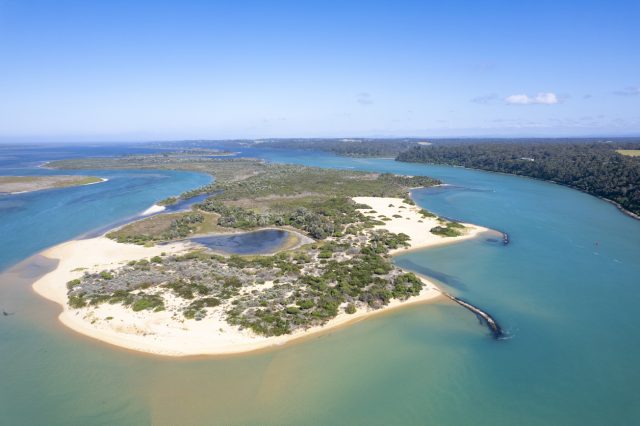Is Gippsland the future of Australian wine?
By Kathleen WillcoxWhen most American wine drinkers — even the self-serious oenophiles among us — think of Australian wines, the first thoughts may be dominated by visions of cartoon kangaroo wine labels, memories of sipping bombastic Shiraz, headlines dominated by devastating bushfires and punishing Chinese tariffs.

But the 2.989 million square-mile nation with 65 major wine regions offers a lot more than those tired, out-of-date stereotypes suggest. Already, standout regions like the Barossa Valley, Margaret River, the Mornington Peninsula and Yarra Valley have come into their own in recent years. And, one under-the-radar region has the potential to capture the hearts and minds of the broader wine-drinking public with its unique blend of auspicious terroir, young and ambitious vintners, progressive farming and production practices and already cult-status wines.
Wine collectors have been eyeing the region with curiosity since Bass Phillip exploded into public consciousness in the early 2000s when Langston’s Classification of Australian Wines declared its Reserve, Premium and Estate Pinot Noirs at the top of the table. (Bass Phillip’s Reserve was perched next to Penfolds Grange offering, a pretty sweet seat). Since 2000, the country’s only official classification of its wine has stayed at the top of the Reserve and Premium heap, and other critics have agreed. The Pinots sell out, invariably, every year.
“Gippsland is an increasingly important region in southeastern Australia, a cool area close to the Tasman Sea and the Bass Straight,” says Patric Bennett, president and CEO of wine importer Vineyard Brands, which represents Bass Phillip in the U.S. “While Bass Phillip was established there many years ago, we feel this is an important area to watch in an era of increasing temperatures in traditional winegrowing regions.”
Sometimes left empty-handed, curious wine lovers have begun peering around at Bass Phillip’s neighbours.
Bird’s eye view of Gippsland terroir
What they find is a paradox.
Gippsland is the largest region in Victoria, resting between the Great Dividing Range and the wild Bass Strait coast. But it is as minute in production volume and inhabitants as it is enormous in size. By the numbers, Gippsland is 15,830 square miles, making it bigger than Switzerland, with around 240,000 inhabitants. (Switzerland has about 8.85 million people living within its borders).
The climate is cool and has attracted adulation for its premium Pinot Noirs and Chardonnays, yet with just 52 producers, and around 617 acres under vine, it is not easy to find a Gippsland wine — especially abroad. Many producers opt to produce and sell their wines locally, or at least regionally, but Bernadine Phelan, executive officer of Wine Gippsland, says there has been a push to send more to international markets as its profile rises.
“The growth has been through the hard work of genuine small-scale wine farmers who are as passionate about how they work and why, as about what they produce,” Phelans says. “The rich volcanic red and dark loams over basalt and clay offer fertile and well-drained soils combined with Bass Strait winds which help keep the seasons long cool and combine to produce richly textured wines with superb flavour and structure.”
Although technically a subregion of Victoria, Phelan says distinguishing themselves as “small, independent artisan wine producers” has become increasingly important to Gippsland vintners. “There are no big corporate labels here, and the producers who are here have a strong focus on sustainable practices and keeping Gippsland pristine with an abundance of nature.”
Among the wine producers, there is a feeling of being (gleefully) in charge of a juicy secret that may get out soon — but may remain deliciously preserved.
“A friend once said to me while working in a larger cellar in the Yarra Valley that he believed the best sites for wine in the new world are yet to be discovered,” says Justin Jenkins, co-founder and winemaker at Fleet Wines. “The mindset of releasing oneself to what is unknown can lead to some of the most brilliant discoveries. Australian cool climate wine is still young. The last 15 years have seen a rapid expansion across all of Tasmania with amazing results. We’ve only just scratched the surface here, and the next few years will see lots of continued growth.”
Gippsland’s reputation is on the rise
It would be easy for the team at Bass Phillip, which not only produces one of the most lauded lines of wines in the country but also produces the priciest Australian Pinot Noir imported into the US, to rest comfortably on its laurels and watch idly as small, unknown vintners in Gippsland clamour to catch up. But Christopher Tan, Bass Phillip’s commercial director, says they want to see fellow producers succeed.
“I think it’s important to support the region where we are from,” Tan says. “We want to see the entire winemaking region of Gippsland gain more international recognition, as it should.”
Tan notes that it is already happening in key markets within Australia.
“If you see the wine list in any good Melbourne restaurant, the section on Gippsland has been growing in the past few years,” he says. “Being present on wine lists across the country is part of efforts to grow the awareness of the region, and we also plan to continue to cooperate with regional bodies like Wine Gippsland, Wine Victoria and Wine Australia to add to the narrative of Gippsland’s growing importance.”
High demand, low volume
Gippsland is walking the line that many regions on the upswing walk between the market’s growing demand and their realistic ability to supply that demand.
“Gippsland producers are keen to expand more into the U.S. and the U.K.,” says Phelan. “Some have made in-market visits recently to explore market opportunities, and others are in discussions with distributors. The challenge can be in producing volume.”
While several producers have recently added “blocks” of vines to their production area, Phelan notes, it will take years for those vines to get online, and those as-yet undefined additions are unlikely to represent an enormous increase in Gippsland’s production numbers. Which is part of the point of course.
“These are not commodity, mass-produced wines,” says Vineyard Brands’ Bennett. Which is why “there is demand at great restaurants and speciality realtors.”

Partner Content
Winemaker Patrick Sullivan agrees that these small-production wines are essentially a labour of deep — perhaps slightly unhinged — love.
For his eponymous brand Patrick Sullivan Wine, he is laser-focused on Chardonnay, with 1.2 acres under vine currently and another five acres prepped and ready to be planted in 2025. And while that represents a four-fold increase in production, it comes from a very small base.
The terroir, the ambition and the potential is seemingly limitless though. Sullivan explains that they are planting a range of clones, primarily Entav, with some 95 and 97, capitalizing on the volcanic soils with basalt bedrock, basalt on clay, and sandstone and quartz sprinkled in for good measure.
When those additional production areas can be harvested, Sullivan hopes that they can begin to make enough wine to meet market demand. Simply finding fruit grown by growers that haven’t been locked up in contract doesn’t happen as it commonly does in other regions, Sullivan explains. That’s how high the demand is.
“While there does seem to be more interest in the area, the total volume of production has barely changed in the last few years,” Sullivan says, in part because there are notable practical drawbacks to the climate. “We are challenged by high rainfall and very cool weather. Many people would like to be able to make the wines we make here, but not many people are up to the challenges of farming it. It is all about the edges of what is possible where the special things are.”
But farming and surviving on a knife’s edge requires, as Sullivan puts it, “discipline and lofty single-minded aspirations.”
A vision that resonates
Producers in Gippsland are nothing if not single-minded, and many also happen to share ideas and philosophies that appear to resonate with younger drinkers who value a dedication to environmental and social standards and are willing to pay more for it.
Jenkins, the Fleet Wines vintner, says that much of the work being done in Gippsland is part of a generational shift among drinkers, and in their case, producers.
“We find that there is an incredibly dynamic younger cohort of wine drinkers out there,” he says. “They’re engaged, excited by not just quality, but innovation, reinterpretation and risk.”
Tan agrees, noting that despite the sky-high price of one of their wines, much of the rest hovers in the $125 price point. And yes, the Bass Phillip team wants more young people to discover their wines.
“We just embarked on a pop-up cellar door project,” Tan explains of the Melbourne outlet offering $65 tasting flights of three Premium Chardonnay or Estate Pinot Noir wines, led by a sommelier. that makes it much easier to access their small-lot, hard to find wines. “We definitely want to make our wines more accessible.”
Some producers are also striving to create a less expensive line of wine for younger consumers that reflects their shared ideology while meeting youngsters where their bank accounts are.

“We have the opportunity to make some of Australia’s best Pinot Noir and Chardonnay at our new property, and this would have a high price point,” says Neil Hawkins, co-founder of The Wine Farm, discussing a newly planted area that, if all goes well, will be earmarked to supply a few hundred cases of wine to the U.S. “But this would only be a small percentage of total production.”
Neil and co-founder and partner Anna Hawkins say they want their wines to be more than “just” meticulously farmed and produced premium products.
“In the large scheme of things wine is a discretionary spend, a luxury,” says Anna. “Which is why we believe all wine should be farmed organically at a minimum. It is honestly refreshing to hear that young people are finding it difficult to connect with wine culture, given the vast majority is farmed in a way that depletes rather than supports its ecosystem.”
Their motivation to plant more and expand their range is rooted in their hopes to share not just their wine, but their farming story.
“We want to do our little bit to encourage a more conscious consumption, in wine and beyond,” Neil says.
The pitch appears to be finding an audience. Exports from Gippsland to the U.S. are growing significantly year-over-year, up 64% in volume and 58% in value for wines above $10 a litre as of September 39, 2024 according to Wine Australia’s latest export report.
Will Gippsland remain essentially a cult club that only the rich cool kids will have access to? The reality imposed by production levels points toward yes. But the implied ethos and stated goals of the producers within the region point toward no.
Time will tell how it all shakes out. In the meantime, if you do spot a bottle of Gippsland, snag it.
Related news
Everything you wanted to know about the Australian beer industry





Although Gippsland has a small production scale, the high quality of its wines demonstrates great potential for global expansion. With a strong commitment to sustainable practices and a unique terroir, it may only be a matter of time before this region gains wider recognition.
Regard Informatika